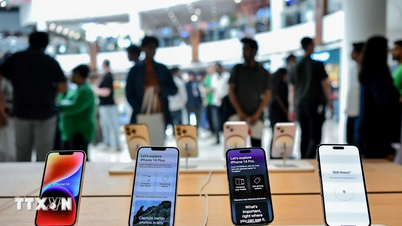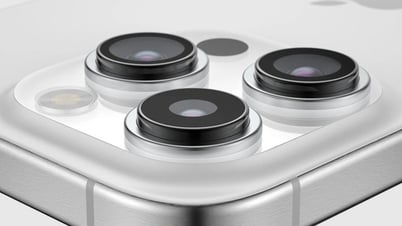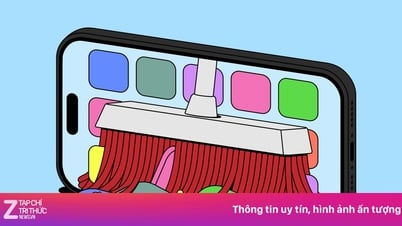
Distributed data hinders healthcare system optimization
One of the current “bottlenecks” of the healthcare industry is fragmented data. Separated data components include electronic medical records, nurse call systems, bed status, operational data (pharmaceutical and medical supplies warehouses, shifts, patient service management systems, building management systems, etc.), data from IoT sensors, etc.
These data are often stored in separate, unsynchronized systems, making it impossible for hospitals to fully exploit the value of the huge amount of data. As a result, operational processes such as bed management, drug inventory, nursing request processing, etc. become overlapping and inefficient. Medical staff have to spend time looking up or updating data on many different platforms.
At the medical level, the lack of real-time data can lead to errors in prescribing, treatment, or monitoring of conditions. Early warnings of health risks are not given in a timely manner, leading to a reactive medical response. For patients, the medical experience can also become cumbersome when information needs to be declared multiple times in different departments.
The lack of data integration also imposes a cost and manpower burden on hospitals. Manual operations require more personnel, increasing operating costs without delivering corresponding value. Furthermore, healthcare facilities may miss opportunities to improve internal efficiency and enhance service quality due to the lack of comprehensive analytics capabilities, without a centralized data source to extract valuable insights.
AI – the solution to a unified healthcare data ecosystem
The rapid development of artificial intelligence (AI) has opened up limitless potential in many fields, including healthcare and medical treatment.

With the ability to collect, link and analyze data, AI can aggregate all data from disparate systems into a unified data center. From there, AI models can be trained to analyze behavior, optimize processes and provide early warnings to medical staff.
This approach helps healthcare facilities shift from a “passive management” model to a “proactive management” model. For example, through treatment data, AI can identify patients about to be discharged and immediately trigger a series of related tasks: prepare discharge papers, notify the transportation system to take the patient home, coordinate the room cleaning team, send prescriptions to the dispensing department, update vacant beds, schedule post-discharge therapy, etc. All of this happens seamlessly, reducing waiting times and optimizing resources.
Schneider Electric, a global leader in digital transformation of energy management and automation, has deployed such solutions in many hospitals around the world .
At the University Hospital of Lille (France), a complex serving around 1.4 million patients, Schneider Electric's EcoStruxure Power Monitoring Expert platform helps accurately assess overall energy consumption and predict maintenance strategies. In particular, the power supply will be guaranteed to be continuous 24/7 and energy consumption will be reduced by 15%, thereby reducing energy costs.
Meanwhile, at The Pavilion at the Hospital of the University of Pennsylvania (USA), Schneider Electric's integrated building solution allows patients to adjust their own lighting, temperature, and curtains through automation technology. This helps improve the patient experience while reducing the burden on nurses.
The core value of the solutions that Schneider Electric pursues lies in the connection between information technology (IT) and operational technology (OT). Synchronization between data layers, from medical records to technical systems, is the foundation for AI to truly be effective in the modern healthcare ecosystem.
In the AI era, establishing a unified data center is considered a prerequisite for the medical industry to develop sustainably, effectively, flexibly and serve patients better. This is the hospital model of the future.
Source: https://doanhnghiepvn.vn/cong-nghe/ung-dung-ai-trong-co-so-y-te-de-hop-nhat-du-lieu/20250526084413436


![[Photo] Prime Minister Pham Minh Chinh receives a bipartisan delegation of US House of Representatives](https://vphoto.vietnam.vn/thumb/1200x675/vietnam/resource/IMAGE/2025/5/28/468e61546b664d3f98dc75f6a3c2c880)


![[Photo] General Secretary To Lam works with the Central Policy and Strategy Committee](https://vphoto.vietnam.vn/thumb/1200x675/vietnam/resource/IMAGE/2025/5/28/7b31a656d8a148d4b7e7ca66463a6894)
![[Photo] Vietnamese and Hungarian leaders attend the opening of the exhibition by photographer Bozoky Dezso](https://vphoto.vietnam.vn/thumb/1200x675/vietnam/resource/IMAGE/2025/5/28/b478be84f13042aebc74e077c4756e4b)
![[Photo] 12th grade students say goodbye at the closing ceremony, preparing to embark on a new journey](https://vphoto.vietnam.vn/thumb/1200x675/vietnam/resource/IMAGE/2025/5/28/42ac3d300d214e7b8db4a03feeed3f6a)





















































































Comment (0)